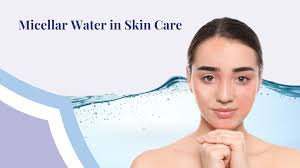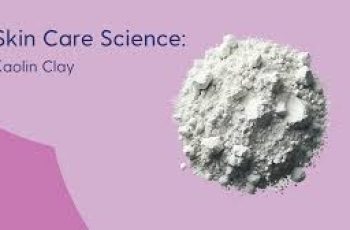
The Science of Micellar Water in Skin Care
Micellar water (MW) is a popular skincare product that can be used to cleanse the skin and remove makeup. It contains a mild detergent that forms micelles, a group of tiny particles that come together in a liquid. These particles have one end that loves water and another end that repels it, allowing them to surround and trap dirt, oil, and other impurities, making it easy to wash them away.
MW comes in various forms, including sprays, wipes, and liquid that you apply to your skin with a cotton pad. In this guide, I explain more about what micellar water is, how to use it, and what to watch out for.
A hydrating cleanser best used to “double cleanse” and remove makeup
Safe for eyelash extensions
Can be appropriate for most skin types
Must be rinsed off, as it contains surfactant ingredients
Micellar Water Uses
Micellar water can be used to “double cleanse” your skin after you’ve already used your primary cleansing product. This can be beneficial if you want to remove residual ingredients like benzoyl peroxide or oils from a cleansing oil or creamy cleanser that can be irritating to the skin if left on for long periods of time. Using micellar water as a second cleanser can also help to ensure you’ve fully removed all dirt, makeup, and oil from your skin.
MW also works well to remove makeup and is safe to use on eyelash extensions. If you are going to use micellar water to remove makeup, apply it to your skin before your regular cleanser, then cleanse your skin as usual.
Here are some of my favorite products with Micellar water:
Micellar Water Ingredients
Micellar water’s key ingredient is micelles – tiny oil molecules suspended in soft water. These micelles attract dirt, oil, and makeup, effectively cleansing your skin. In addition to micelles, common ingredients in micellar water include purified water, glycerin, and mild surfactants such as cetrimonium bromide. Glycerin , a common ingredient, helps to moisturize the skin while cleansing.
Is Micellar Water Oil-Free?
No, micellar water is not oil-free. The micelles in the water are composed of oil molecules, which help attract and remove impurities from the skin. However, micellar water is formulated to be lightweight and non-greasy, making it suitable for various skin types, including oily skin.
Micellar Water vs. Thermal Spa Water
While both are types of water you use on your skin, micellar water and thermal spa water have different uses. Thermal spa water is primarily used for its soothing and hydrating properties, often used as a spray or mist to refresh and calm the skin. Micellar water, on the other hand, is designed for cleansing and makeup removal.
Micellar Water vs. Toner
While micellar water is used to cleanse the skin and remove makeup, toner is applied after cleansing to remove any remaining impurities and restore the skin’s pH balance. It helps to hydrate, soothe, and prepare the skin for the next steps in your skincare routine. Toners can also address specific skin concerns like oiliness, dryness, or redness. Be sure to use a toner that is right for your Baumann Skin Type , however, as using the wrong toner for your skin can lead to dryness, stinging, and other side effects.
For Makeup Removal
One of the most popular uses of micellar water is for makeup removal. Its ability to break down and lift away makeup without harsh rubbing makes it ideal for sensitive areas like the eyes and lips. It is also safe to use on eyelash extensions.
For Acne
MW can be part of an acne-prone skincare routine, but it is not the best primary cleanser for acne. A salicylic acid cleanser is often more effective for treating acne, though the best cleanser for you will depend on your skin type. If you have sensitive skin, you can use micellar water as a second cleanse to remove any residual acne wash ingredients that might irritate the skin, such as benzoyl peroxide.
For Teens
MW can be an effective double cleanser for teens, especially those with acne-prone skin. As noted above, micellar water can help to remove any residual ingredients left on your skin from acne cleansers, such as benzoyl peroxide. However, micellar water is not the most effective primary cleanser on its own for treating specific skin problems like acne. Instead, find the best teen face wash for your skin type and pair it with micellar water if you prefer.
For Men
Micellar water is an excellent cleanser for men to use after shaving and is suitable for both oily and dry skin types. However, micellar water still needs to be rinsed off of the skin after using to avoid irritation after shaving.
For Mature Skin
For mature skin, MW offers a gentle way to cleanse without stripping the skin of its natural oils. It helps to maintain hydration and can be a soothing option for those with delicate or thinning skin.
For Dry Skin
MW can be a good choice for double cleansing dry skin, since it can remove residual ingredients from your primary cleanser that can cause irritation and more dryness. If you have dry or sensitive skin, look for a micellar water that is fragrance-free and alcohol-free, such as Bioderma.
For Oily Skin
MW is particularly beneficial for oily skin as a second cleanser. Start with an exfoliating cleanser containing salicylic acid to control oil and prevent breakouts, then follow with micellar water to remove any remaining residue. For the best results, choose products based on your specific skin type.
Bottom Line
Micellar water has become very popular in recent years and can be a beneficial addition to your skincare regimen to help ensure your skin is clean. However, like all products, micellar water is not necessarily right for everyone. Take the quiz to find out which of the 16 skin types you are to know for sure if micellar water could be a good choice for you.


